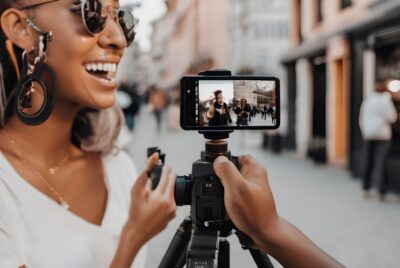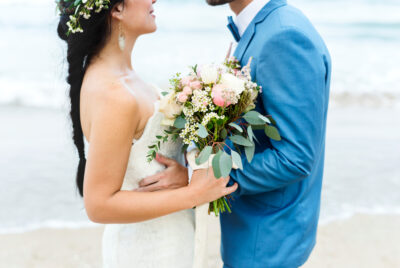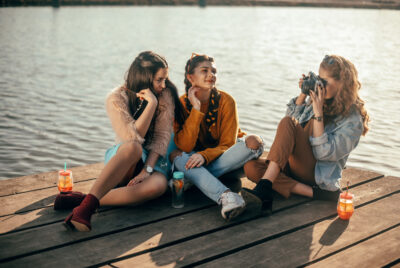Model Photography: A Passionate Advisor’s Guide
Introduction
Model photography is a captivating and versatile field that allows photographers to capture the unique beauty, style, and personality of individuals. It’s more than just taking pictures; it’s an art form that combines creativity, skill, and vision to produce striking images. In this comprehensive guide, I’ll share my passion and expertise in model photography, providing valuable insights, tips, and reasons why it’s such a fulfilling and rewarding endeavor.
Choosing the Right Model
Selecting the ideal model is the foundation of a successful model photoshoot. It’s not solely about physical appearance but finding someone who can embody your creative vision and translate it into their presence on camera. Models with experience in posing and expression can significantly enhance the quality of your photographs. Consider factors such as body type, facial features, and the model’s ability to convey emotions that align with your concept. An effective way to find models is through modeling agencies, social media platforms, or networking within the photography community.
Selecting the Ideal Location
The choice of location sets the stage for your model photoshoot. It’s not merely a backdrop; it’s a crucial element that influences the mood and narrative of your images. The location should align with your creative vision and complement the style you want to convey. For example, an urban setting might evoke a sense of modernity and vibrancy, while a serene natural landscape can create a tranquil and timeless atmosphere. Consider the availability of natural light, accessibility, and any permits required for the chosen location.
Camera Gear and Settings
To excel in model photography, having the right camera equipment and settings is essential. A high-quality DSLR camera with interchangeable lenses provides versatility and control over your shots. Portrait lenses with wide apertures (such as f/1.4 or f/1.8) are excellent choices for achieving beautiful background blur and emphasizing the model. Understanding your camera’s settings, including aperture, shutter speed, and ISO, allows you to adapt to various lighting conditions and achieve the desired effects.
Lighting Techniques
Mastering lighting techniques is crucial for creating captivating model photographs. Natural light is a favorite among many photographers for its soft and flattering qualities. However, studio lighting setups provide full control over the lighting environment, allowing you to shape and enhance the model’s features. Experiment with techniques like Rembrandt lighting, split lighting, or butterfly lighting to achieve different moods and effects. Don’t shy away from using modifiers such as softboxes, reflectors, or diffusers to control and manipulate light to your advantage.
Posing and Directing Models
Effective posing and direction are essential skills for a model photographer. Communication is key; you must be able to convey your vision clearly and guide the model to achieve the desired expressions and body language. Start with basic poses and gradually progress to more advanced ones as your confidence grows. Encourage natural movements and candid moments to capture genuine emotions. Remember, a relaxed and comfortable model is more likely to convey authenticity in their poses and expressions.
Wardrobe and Styling
Wardrobe and styling choices play a significant role in conveying the intended message of your photos. Collaborate with a stylist or work closely with the model to curate outfits that complement the concept. The choice of clothing, accessories, and makeup should align with the theme and style of the photoshoot. Whether it’s high fashion, vintage, or casual, the wardrobe should enhance the model’s presence and contribute to the overall narrative.
Building Rapport with Models
Establishing a positive and collaborative relationship with your models is crucial for a successful photoshoot. Create a comfortable and respectful atmosphere where models feel safe to express themselves. Engage in open communication and provide constructive feedback when necessary. Building trust and rapport can lead to a more relaxed and creative environment, resulting in better photographs.
Capturing Expressions and Emotions
Model photography is not just about capturing faces; it’s about conveying emotions and expressions that resonate with viewers. Encourage models to connect with their feelings and express them authentically. Engage in conversations to evoke the desired emotions for each shot. Candid moments and genuine expressions can add depth and storytelling to your photographs, making them more relatable and engaging.
Post-Processing and Editing
The art of model photography doesn’t end with the click of the shutter. Post-processing and editing play a crucial role in enhancing the final images. Use software like Adobe Photoshop or Lightroom to refine skin tones, colors, and overall image quality. Maintain a balance between enhancing the model’s features and preserving their natural appearance. Remember that subtlety is key; avoid excessive retouching that may lead to an unnatural look.
Ethical Considerations
Ethical conduct is paramount in model photography. Always prioritize the comfort, safety, and dignity of your models. Obtain proper consent, especially for intimate or provocative shots, and respect personal boundaries. Maintain professionalism and adhere to ethical guidelines in all aspects of your work.
Model Releases and Legalities
Understanding the legal aspects of model photography is essential to protect both your work and your models’ rights. Always obtain model releases, which grant you permission to use the photographs for specific purposes. Ensure that your models are aware of how their images will be used and respect any limitations they may have.
Promoting Your Work
Once you’ve created a stunning portfolio of model photographs, it’s time to share your work with the world. Create an online portfolio or website to showcase your best images. Utilize social media platforms, photography communities, and networking opportunities to gain exposure and connect with potential clients or collaborators. Engage with your audience, respond to inquiries promptly, and maintain a professional online presence.
Challenges and Rewards of Model Photography
Model photography comes with its set of challenges, from unpredictable weather conditions to tight schedules and creative blocks. However, the rewards are equally significant. The satisfaction of creating beautiful, evocative images and the opportunity to collaborate with talented individuals make every challenge worth it. Embrace the learning process, continuously improve your skills, and savor the joy of capturing moments of beauty and personality through your lens.
Conclusion
In the realm of photography, model photography stands as a vibrant and fulfilling genre. It allows us to celebrate the uniqueness of individuals, tell compelling stories, and create art that resonates with viewers. As an advisor and enthusiast, I encourage you to explore the world of model photography, unlock your creativity, and embark on a journey of capturing moments of beauty and grace that will leave a lasting impression.
Frequently Asked Questions (FAQs)
Do I need expensive equipment to start with model photography?
While quality equipment can make a difference, you can start with what you have and gradually invest in better gear as you progress.
How do I find models to collaborate with for photoshoots?
You can find models through modeling agencies, social media platforms, or by networking within the photography community.
What’s the best way to pose models if I’m just starting out?
Start with basic poses and gradually experiment with more advanced ones as you gain experience. Communication and practice are key.
How can I build a strong portfolio in model photography?
Collaborate with models, makeup artists, and stylists to create diverse and impressive work. Continuously update your portfolio.
Are there any ethical considerations I should be aware of in model photography?
Yes, always prioritize the comfort and safety of your models. Obtain proper consent and respect personal boundaries.
Further reading
Check out our other relevant articles:
.





Comments are closed.